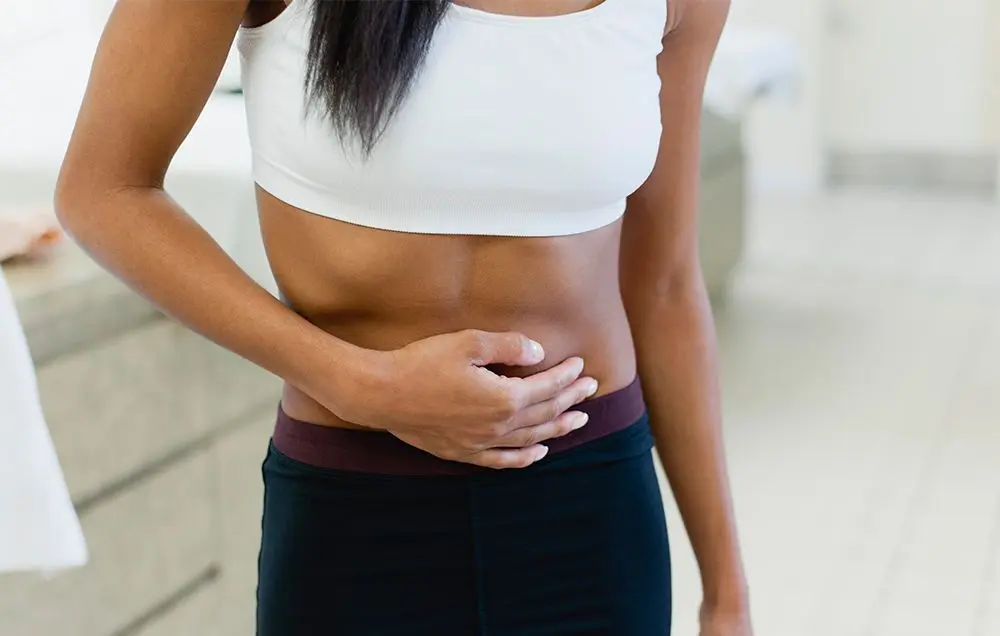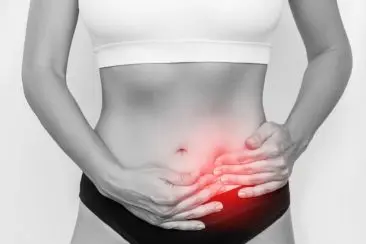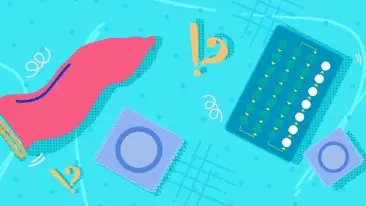What Factors Contribute To Female Lower Abdominal Pain?
Female abdominal pain can be caused by various things, from minor infections to intestinal disorders. Discover the causes of female abdominal pain, broken down by the tummy region.
Female abdominal pain is widespread and frequently manageable, and various factors can cause it. By 'lower abdomen,' we usually mean the area below the belly button (navel). That area of pain may also be called pelvic pain or simply stomach ache.
While most lower abdominal pain does not indicate a dangerous condition, it can occasionally signify something more serious. If you're concerned about lower abdominal pain, it's probably nothing to worry about. However, paying close attention to the stomach area that hurts can help determine what's causing the pain and how to manage it.
Central Lower Abdominal Pain
The bladder, uterus (womb), and a portion of the bowel are the primary organs in the middle of a woman's lower abdomen. The following are some of the possible causes of pain in that region.
Period Pain
Period pain is typically described as a crampy, dull, or tight pain in the lower abdomen, occasionally radiating outwards or lower back. It can be pretty uncomfortable, but many find that a hot water bottle and ibuprofen help them cope.
UTIs
UTIs (urinary tract infections) can cause lower abdominal pain in women and urinary symptoms such as burning when you pee or the need to urinate frequently or urgently.
Mild urinary tract infections, such as cystitis, often resolve independently with adequate fluid intake, but more persistent UTIs may require a brief course of antibiotics, which your doctor can prescribe. Severe UTIs can affect the kidneys and cause lower back pain on one or both sides and general malaise, sometimes accompanied by flu-like symptoms. Therefore, you will need to consult a doctor immediately if your symptoms worsen. Likewise, you should consult a physician if you have recurrent UTI symptoms.
Pelvic inflammatory disease
Sexually transmitted infections can affect the uterus, fallopian tubes, and ovaries. Untreated reproductive tract infections can become very serious and result in long-term complications and, therefore, must be treated by a physician. In addition, these infections are frequently caused by an underlying sexually transmitted infection, so if you are a sexually active woman, you must receive regular sexual health screenings.
Pain during sex, unexpected vaginal bleeding, or discoloured, smelly discharge are all possible symptoms of a sexually transmitted disease or reproductive system infection.
Pain in the lower left abdomen
While many of the causes mentioned above of one-sided abdominal pain can affect the left side, there are some reasons why the pain may be limited to the left – mainly because the bowel on the left is closer to the digestive system's end. In addition, wind trapped in the lungs and bloating may disproportionately affect the left side.
Polyps Or Diverticular Disease
Diverticular disease may also affect the lower left side or manifest as more widespread pain. Polyps are small wart-like growths in the bowel, and diverticular disease is when the bowel develops tiny pockets. Diverticulitis occurs when those small pockets become inflamed, which can be quite painful.
Diverticulitis and polyps can cause diarrhoea and occasionally bleeding in the bowel. See a doctor immediately if you notice blood in your poo or if your poo looks black and tarry.
Pain In The Lower Right Abdomen
Appendicitis
The right lower abdomen contains the junction of the small and large intestines. The appendix is a small section of the bowel near that junction that can become inflamed, swollen, and infected. This is a case of appendicitis. Appendicitis is typically extremely painful and manifests as pain in the lower right abdomen – though the pain may also be felt in the central lower abdomen.
General lower abdominal pain
Muscular Pain
Muscular pain is a possible cause of lower abdominal pain in some cases. A strained muscle caused by exercise or an injury can be excruciatingly painful and affect one or both sides of the lower abdomen. Occasionally, it is possible to determine why or when muscular pain began, and it is typically treatable with simple painkillers and rest.
Lower Abdominal Pain In Pregnancy
Pregnancy alters the shape and location of numerous organs and muscles in the lower abdomen, causing discomfort and strain. Later in pregnancy, women frequently experience Braxton Hicks contractions, in which their muscles tense up in preparation for childbirth.
Remember that seeking advice from your designated midwife or prenatal team is always acceptable if you have concerns about your health during pregnancy. Lower abdominal pain can have serious consequences during pregnancy, and severe unexplained pain, or pain associated with unusual vaginal discharge or bleeding, should be treated as an emergency.
Ectopic Pregnancy
Problems with one ovary or fallopian tube can cause lower abdominal pain on one or both sides. These conditions can also cause general or central lower abdominal pain, typically severe. Ectopic pregnancies affect approximately 11,000 women in the United Kingdom each year.
When To See A Doctor
Lower abdominal pain is joint in women, and period pain is a prevalent cause. Certain types of pain can be managed at home with over-the-counter medications, hot water bottles, and rest or light exercise, depending on the cause.
A doctor should immediately evaluate extremely severe or unmanageable pain that has no apparent cause or is accompanied by other concerning symptoms. While determining the cause is not always easy, it is beneficial to identify any urinary symptoms, bowel problems, or pain related to your period. A physician should also evaluate recurring pain.
How Mobi Doctor Can Help
With Mobi Doctor, you can access online urgent care. Get an instant diagnosis, explore conditions and treatments, and text a healthcare professional if needed.






